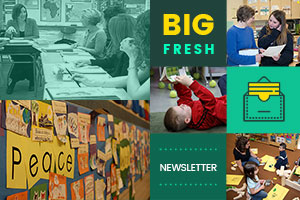Time is generally the best doctor.
Ovid
A few years ago, my son and I were in the walk-in clinic for who-knows-what ailment, and both of us were waiting for the doctor on call. Our time in these situations is typically spent with me giving my son constant reminders about what he cannot touch in the doctor’s office (pretty much everything). If we are smart about these situations, we remember to bring books to occupy our minds.
When the doctor did show up, he greeted us warmly with a handshake. He and my son went through the typical questioning routine we associate with bringing your child to the hospital: “What hurts? When did it start hurting? Where does it hurt? On a scale of 1 to 10, how much would you say . . .”
I filled in the gaps when my son wasn’t sure of an answer, or when he was just being silly.
As the doctor finished with his questions, he asked my son what he enjoys doing in his spare time. “Reading and writing!” he replied. I beamed, ever the educator and proud parent even when my son is struggling to breathe.
What happened next took me by surprise. The doctor listened and responded to him, and not the “uh huh” or “that’s great” niceties one is typically accustomed to in these situations. He conversed with him about his reading and writing.
Doctor: Reading and writing — which do you prefer to do more?
My son: Um . . . it depends.
Doctor: On what?
My son: Well, right now I am enjoying writing because I have a story started.
Doctor: Really? What’s the title of your story?
My son: It’s called Barfman. It’s about a superhero whose power is to barf on his villains.
I sank low in my chair.
Doctor: Wow, I’ve never heard of a story like that. Can you tell me more about it?
My son, hesitating: You mean . . . everything?
Doctor: Yes, everything. Tell me everything you know about your story.
My son: “Well, before I share, I want you to know that this a chapter book, even though my dad says it is a graphic novel. Yes, it has pictures in it, but it is a chapter book.”
Now my head was in my hands.
Doctor: I appreciate you clearing that up for me.
At that point, my son and the doctor had an in-depth conversation about the plot, characters, and small details of his graphic novel chapter book. The doctor continued to ask more questions, which my son happily answered. As he wrapped up his medical assessment, the doctor even had a few suggestions for the writing project. To close out our visit, we were given a prescription and sent home.
After this visit, I had a realization and a question. My realization: I’ve never listened to my son, or any student for that matter, for that long about a story they were attempting to write. Never. I felt like the worst parent of the year at this point. My question was: Doesn’t this doctor have other patients?! He might have great bedside manner, but his efficiency was lousy.
This experience was eye-opening for me. As a literacy leader, am I creating schedules and opportunities during the school day for these in-depth conversations to occur? Am I encouraging staff to confer in ways that ensure they truly hear what a student wants to share about their reading and writing? Am I providing professional learning and support so teachers learn how to capture the information shared during these times? Am I honoring all students’ stories?
Years later, my son still remembers this visit to the walk-in clinic. What will your students remember about your classroom?
This week we look at assessment and student self-reflection. Plus more as always — enjoy!
Matt Renwick
Contributor, Choice Literacy
Matt Renwick is an elementary principal in Mineral Point, Wisconsin. Matt blogs at Reading by Example (readingbyexample.com), tweets @ReadByExample and writes for ASCD.
Free for All
[For sneak peeks at our upcoming features, quotes and extra links, follow Choice Literacy on Twitter: @ChoiceLiteracy or Facebook: http://www.facebook.com/ChoiceLiteracy or Pinterest: http://pinterest.com/choiceliteracy/]
Katherine Sokolowski revises the weekly reflection form her fifth graders use to track goals, progress, and expectations:
http://www.choiceliteracy.com/articles-detail-view.php?id=2326
Ditching the cookies they might use in a traditional end-of-unit celebration, Melanie Meehan and a fourth-grade teacher develop a lesson to help a challenging class of students reflect on their learning:
http://leadliteracy.com/articles/499
Franki Sibberson helps her students learn how to set writing goals early in the year:
http://readingyear.blogspot.com/2017/09/setting-writing-goals.html
Grades are a reality for most students. Pernille Ripp explains how we can at least change the conversation to be more thoughtful and include students in the grading process:
http://pernillesripp.com/2017/06/23/tools-for-changing-the-grading-conversation/
For Members Only
Stephanie Affinito explains how to use student checklists in literacy intervention:
http://www.choiceliteracy.com/articles-detail-view.php?id=2801
Tara Barnett and Kate Mills combine an engagement inventory and an on-demand writing assessment to get a full picture of skills and habits in their classroom community:
http://www.choiceliteracy.com/articles-detail-view.php?id=2660
Mark Levine wonders if his middle school students are spending enough time reflecting on the L in K-W-L, so he creates a form to help:
http://www.choiceliteracy.com/articles-detail-view.php?id=2826
In this week’s video, Bitsy Parks helps her first-grade students complete “thumb reflections” on making connections in reading early in the year by modeling connections from three conferences in a whole-class share session:
http://www.choiceliteracy.com/articles-detail-view.php?id=2734
In an encore video, Sean Moore helps his second graders remember the classroom routines and protocols for sharing reading reflections through a circle group:
http://www.choiceliteracy.com/articles-detail-view.php?id=1758
That’s all for this week!



